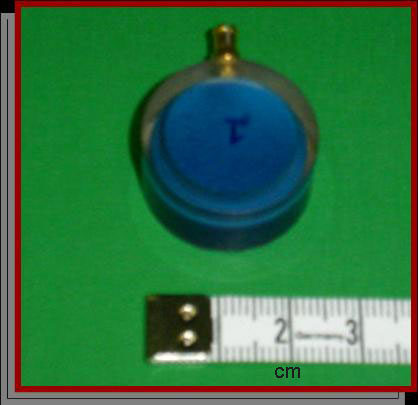
The sensor before attachment to patient
|
|
|
The sensor before attachment to patient |
| 'Smart stethoscope' monitors kidney therapy | ||
The collaboration Sponsor: Engineering and Physical Sciences Research Council (GR/N19243/01)
Principle Investigator: Professor TG Leighton
Co-Investigators: Dr AJ Coleman (Guys and St Thomas' Hospital); Dr GJ Ball (School of Engineering Sciences, University of Southampton)
Students: F Fedele (in vitro and in vivo experimentation), AR Jamaluddin and CK Turangan (Computational Fluid Dynamics)
Engineering and manufacturing: A Hurrell (Precision Acoustics Ltd.) and PR White (University of Southampton)
Clinical assistance: Staff at Guys and St Thomas' Health Trust
Project description: If you develop kidney stones, they need to be removed. If they cannot be dissolved by drugs, the favoured procedure today is lithotripsy. In this, thousands of shock waves are projected into the body to smash up the stones. But there is no way to monitor when the stones have been broken up by the lithotripter. As a result, more than 50% of patients are sent home with their stones insufficiently fragmented, and must return for re-treatment, with commensurate costs in theatre time, patient discomfort etc. Conversely, some stone might break up before the end of the treatment: if we had a way of monitoring whether the stone had broken up, we would avoid unnecessary patient exposure and wear-and-tear on the lithotripter device, and wastage of theatre time.
In this project a listening device, the 'smart stethoscope' was developed. It does nothing more than listen to the echoes that reverberate around the inside of the patient's body when the shock wave hits the stone. It is and imperfect analogy, but consider a railwaymen walking along the length of the train, hitting the metal wheels with a hammer. If the wheel rings nicely, he knows that it is not cracked. If the wheel is cracked, it gives a duller sound. We are looking for the stone to go from being intact at the start of the treatment (when it will give a nice ring in "tick" sound), to being fragmented at the end of the treatment (when it will give a duller "tock" sound).
Below we play recordings from three patients: In one patient the treatment was successful, in another it was partially successful, and in another it was unsuccessful. Each recording consists of a sound from the start of the treatment, followed by one from the end. The first should sound like a nice 'tick' (the equivalent of the railwayman hitting a good wheel). If the treatment has been successful, the second sound should sound like a duller 'tock' because the stone has broken up (the equivalent of the railwayman hitting a cracked wheel). Hence a successful treatment should be indicated by a "tick-tock" sound.
Judge for yourself, by how well the sounds resemble 'tick-tock', to see if you can decide which sound came from a successful treatment, which from a partially successful treatment, and which from an unsuccessful treatment.
To find the answer, click here.
Note that these sounds contain information from the ultrasonic frequency range: in order for you to hear them, the frequencies have been compressed into an audio range signal. (Specifically, the data has not been resampled but simply played back at a slower rate (akin to reducing the play back rate on a tape recorder). Wav files are stored with header information that defines the playback rate. The software we used just changes that playback rate from 5 MHz to 11 kHz.)
To learn more about this project, click on the following links for: 1. Homepage for lithotripsy project
2. Introduction to lithotripsy (Tutorial) 3. Formal report on the project
4. More on listening to the sounds for yourself
Click here for Biomedical Ultrasonics page
This page was last updated by TG Leighton, 26 October 2004